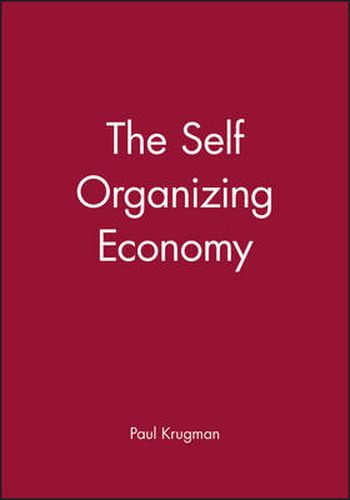Readings Newsletter
Become a Readings Member to make your shopping experience even easier.
Sign in or sign up for free!
You’re not far away from qualifying for FREE standard shipping within Australia
You’ve qualified for FREE standard shipping within Australia
The cart is loading…






In the last few years the concept of self-organizing systems - of complex systems in which ramdomness and chaos seem spontaneously to evolve into unexpected order - has become an increasingly influential idea that links together researchers in many fields, from artificial intelligence to chemistry, from evolution to geology. For whatever reason, however, this movement has so far largely passed economic theory by. It is time to see how the new ideas can usefully be applied to that immensely complex, but indisputably self-organizing system we call the economy.This short book, written in an informal and controversial style, shows how models of self-organization can be applied to many economic phenomena - how the principles of order from instability which explain the growth of hurricanes and embryos, can also explain the formation of cities and business cycles; how the principles of order from random growth can explain the strangely simple rules that describe the sizes of earthquakes, meteorites, and metropolitan areas. Without discarding the powerful insights of conventional economic analysis, Krugman weaves together strands from many different disciplines, from location theory to biology, to create a surprising new view of how the economy forms structures in space and time.
$9.00 standard shipping within Australia
FREE standard shipping within Australia for orders over $100.00
Express & International shipping calculated at checkout
Stock availability can be subject to change without notice. We recommend calling the shop or contacting our online team to check availability of low stock items. Please see our Shopping Online page for more details.
In the last few years the concept of self-organizing systems - of complex systems in which ramdomness and chaos seem spontaneously to evolve into unexpected order - has become an increasingly influential idea that links together researchers in many fields, from artificial intelligence to chemistry, from evolution to geology. For whatever reason, however, this movement has so far largely passed economic theory by. It is time to see how the new ideas can usefully be applied to that immensely complex, but indisputably self-organizing system we call the economy.This short book, written in an informal and controversial style, shows how models of self-organization can be applied to many economic phenomena - how the principles of order from instability which explain the growth of hurricanes and embryos, can also explain the formation of cities and business cycles; how the principles of order from random growth can explain the strangely simple rules that describe the sizes of earthquakes, meteorites, and metropolitan areas. Without discarding the powerful insights of conventional economic analysis, Krugman weaves together strands from many different disciplines, from location theory to biology, to create a surprising new view of how the economy forms structures in space and time.